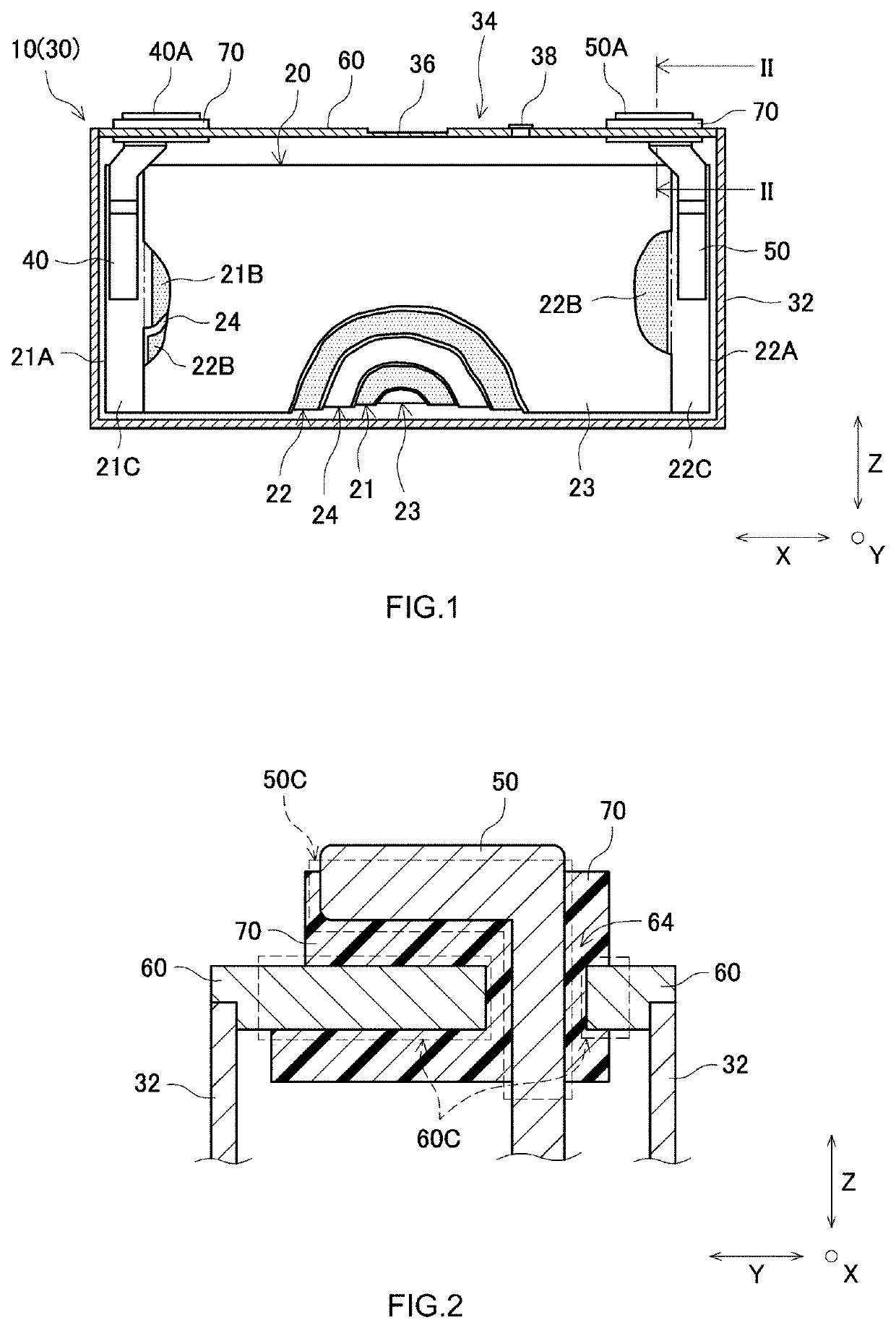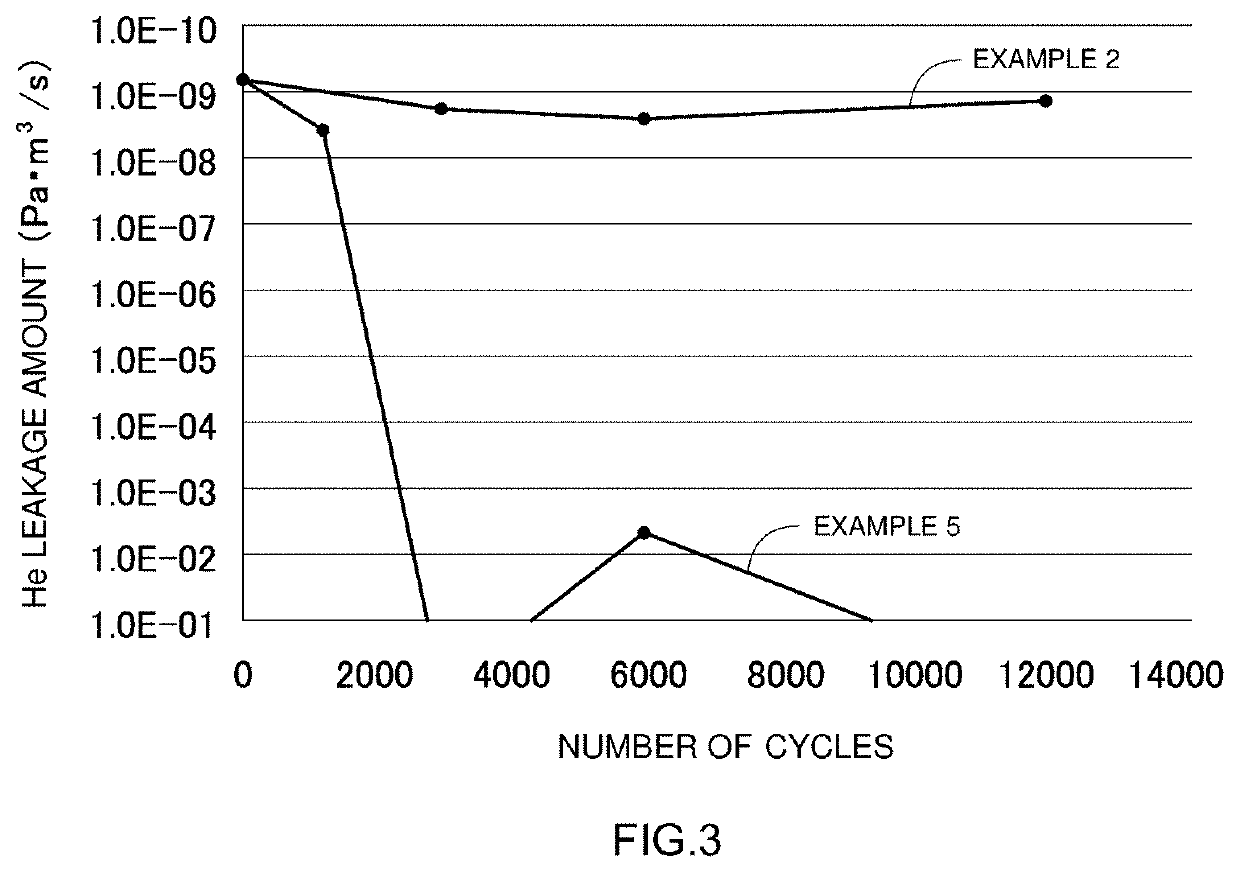Lid body and sealed battery
a technology of sealing material and battery body, which is applied in the direction of cell components, cell component details, electrochemical generators, etc., can solve the problems of difficult to prevent peeling at the joint surface of the sealing material and the terminal, and affect the performance of the battery, so as to reduce the number of parts used, reduce manufacturing costs, and reduce the sealing material sealability
- Summary
- Abstract
- Description
- Claims
- Application Information
AI Technical Summary
Benefits of technology
Problems solved by technology
Method used
Image
Examples
example 1
[0053]Herein PPS and an inorganic filler were prepared to a ratio by weight of PPS:inorganic filler=90:10. Then PPS was melted at 330° C., and was mixed with an inorganic filler, to prepare an injection molding material.
[0054]There were prepared a 50 mm×50 mm×3 mm test pieces made of aluminum, and having a φ8 mm through-hole in the center. One of the surfaces of each test piece was subjected to a surface roughening treatment by laser irradiation.
[0055]A mold was prepared, for the surface of the test piece having undergone the surface roughening treatment, such that the through-hole of the test piece was plugged and such that a φ16 mm×3 mm injection molded body could be molded at the center of the test piece. The test piece was then placed in the mold.
[0056]A test molding material at 330° C. was filled in the mold at an injection rate of 50 mm / s.
[0057]Once the test molding material had cooled and hardened, the mold was removed, to yield Test sample example 1 in which a φ16 mm×3 mm mo...
examples 2 to 5
[0058]Test sample examples 2 to 5 were produced in the same way as in Test sample example 1, but herein the test molding material was prepared so that the mixing ratio of PPS and inorganic filler took on the values of ratio by weight given in Table 1.
Measurement of the Coefficient of Linear Expansion
[0059]The coefficients of linear expansion of the produced Test sample examples 1 to 5 were measured by TMA. The results are given in Table 1.
TABLE 1Test molding materialThermalweight percentCoefficient of linearcyclingTest samplePPSInorganic fillerexpansion × 10−5 / KresistanceExample 190101.8GoodExample 280202GoodExample 370302.3GoodExample 460403.5PoorExample 550505Poor
Thermal Cycling Test
[0060]Thermal cycling from −65° C. to 120° C. was carried out, over 5500 cycles, for Test sample examples 1 to 5.
PUM
| Property | Measurement | Unit |
|---|---|---|
| temperature | aaaaa | aaaaa |
| pressure | aaaaa | aaaaa |
| breaking strength | aaaaa | aaaaa |
Abstract
Description
Claims
Application Information
 Login to View More
Login to View More - R&D
- Intellectual Property
- Life Sciences
- Materials
- Tech Scout
- Unparalleled Data Quality
- Higher Quality Content
- 60% Fewer Hallucinations
Browse by: Latest US Patents, China's latest patents, Technical Efficacy Thesaurus, Application Domain, Technology Topic, Popular Technical Reports.
© 2025 PatSnap. All rights reserved.Legal|Privacy policy|Modern Slavery Act Transparency Statement|Sitemap|About US| Contact US: help@patsnap.com


